

























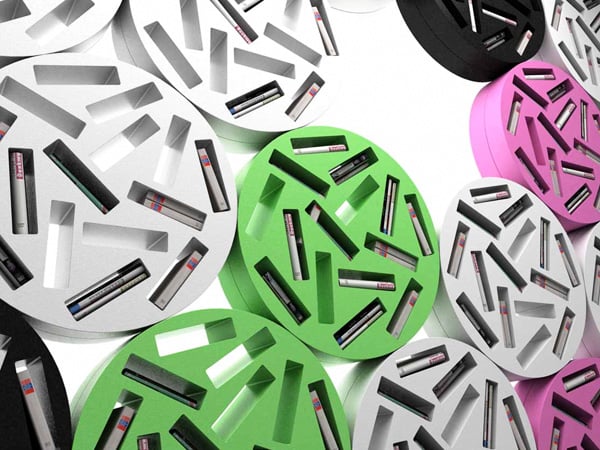
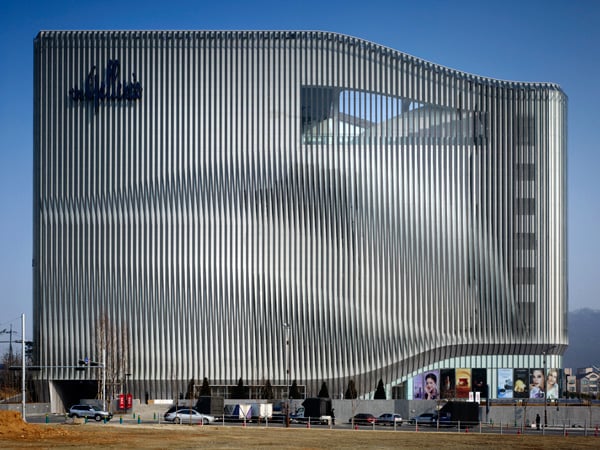
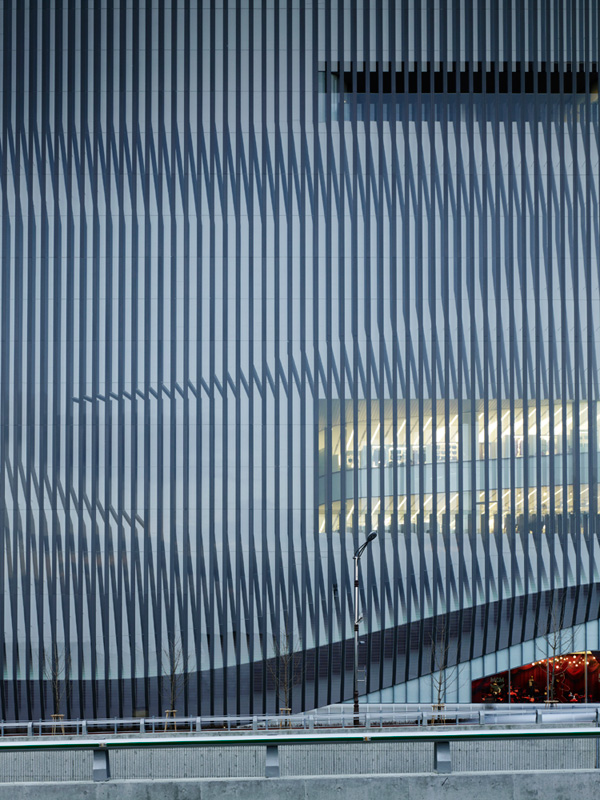
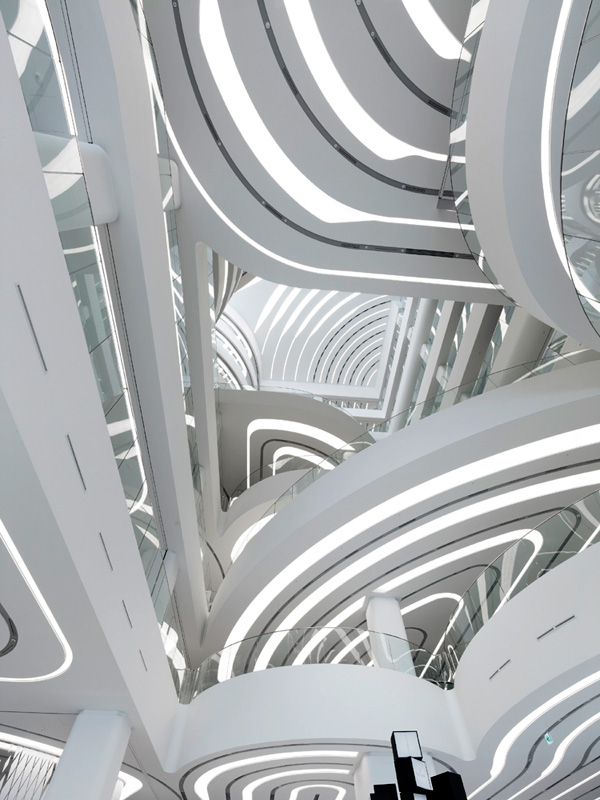
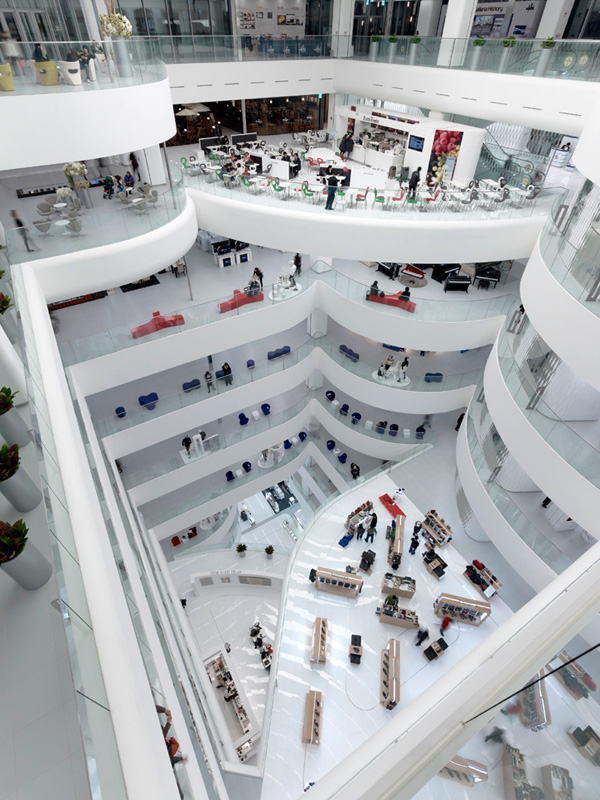
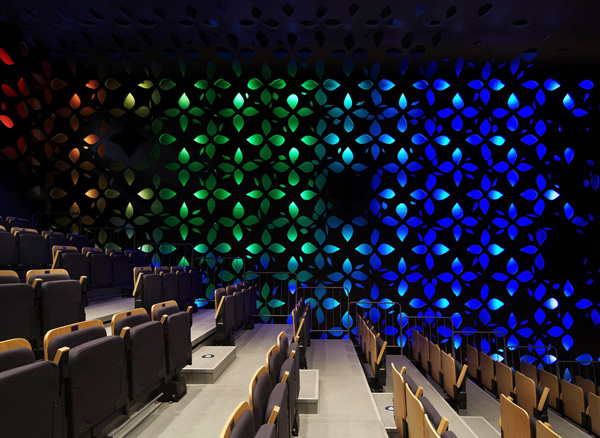
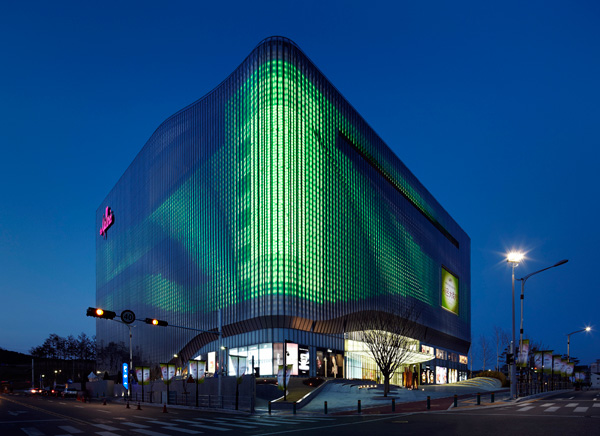
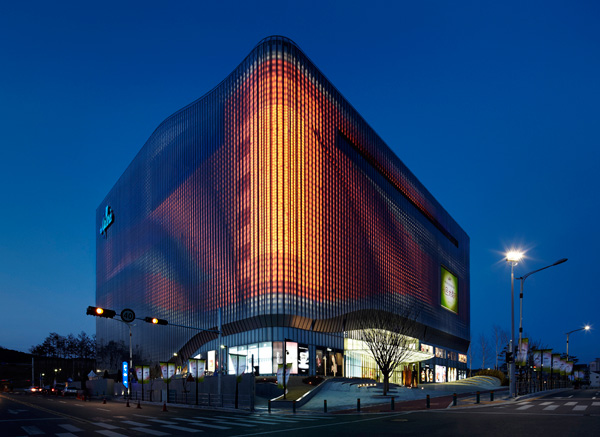
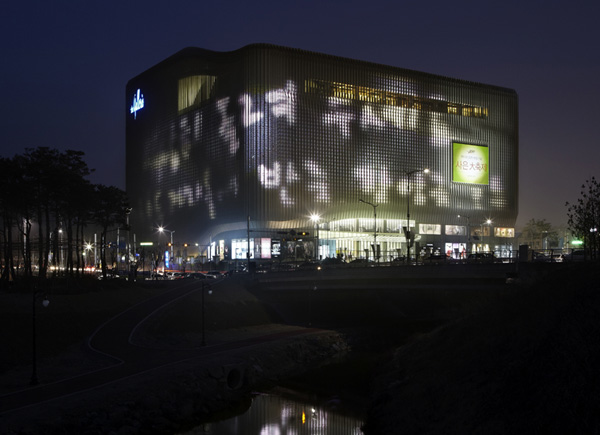
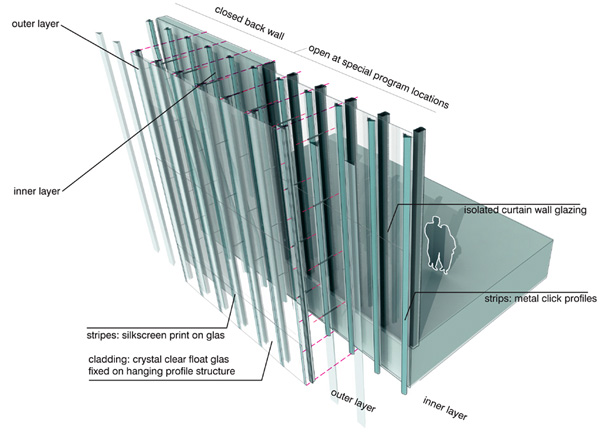
Designer: UNStudio



Imagine a mix between a beehive and a slinky: Flexicomb is a light-hearted new material that combines the properties of both. In contrast to conventional rigid honeycombs, Flexicomb is flexible, bouncy, and fun. This porous, translucent material transmits light effectively, and it can be bent, sprung, and compressed to form sculptural installations, lamps, desktop accessories, and furniture prototypes.
PadLAb makes Flexicomb by fusing thousands of closely packed polypropylene tubes on one end to form a flexible honeycomb. The production of Flexicomb begins with a set of tightly compressed cylinders. When the ends of the closely packed tubes are heated, they fuse into a matrix of hexagons.
The idea for Flexicomb grew out of PadLAb co-founder Dan Gottlieb’s research project on structural honeycomb at the Yale School of Architecture. Commercial aerospace and transportation-grade honeycombs exceeded a student budget, so Gottlieb decided to make his own, out of a more economical raw material: drinking straws. Dan’s experiments making furniture out of straws included the use of slim red coffee-stirrers and fat fluorescent super-straws.
Link: http://transmaterial.net/index.php/2009/08/13/flexicomb/



The purpose of the Sphelar solar cells is to improve on regular solar panels. You know how most solar cells are flat, and are at only one angle? That isn’t really an accurate way to collect the sun, but Sphelar solar cells are solidified drops of silicon that can be molded into any shape. For example, they can be placed on a curved dome that allows the sun to hit it from any angle.

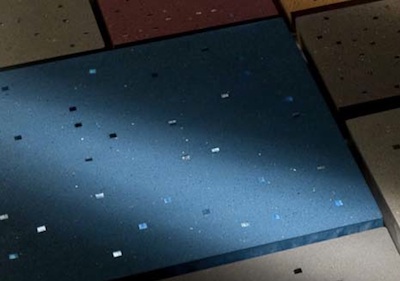
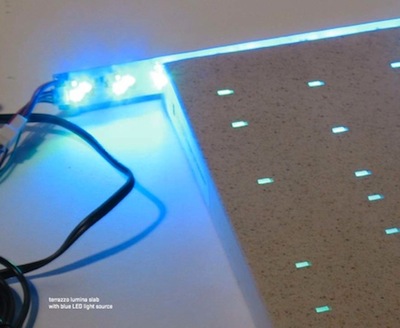
Light channels are clear for all standard Terrazzo. Terrazzo’s light channels do not have a single grain direction, their light channels are oriented both parallel and perpendicular to a tile’s length...
Unlike standard Terrazzo products which work without electricity, Terrazzo (lumina) redirects lighting creating a luminous surface. A lumina product diffuses a single point of light into thousands. Terrazzo (lumina) combines the durability of concrete with a light source.
SF readers will be forgiven if they find themselves thinking about illuminum, or at least its basic functionality, a material showcased in Richard Morgan's 2003 novel Altered Carbon:
The walls and ceiling bore an irregular spacing of illuminum tiles whose half-life was clearly almost up, and their feeble radiance had the sole effect of shoveling the gloom into the center of the room.
Link: http://www.technovelgy.com/ct/Science-Fiction-News.asp?NewsNum=2705